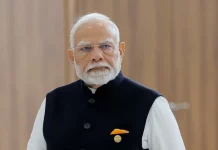ISLAMABAD: Some serious questions have been raised over the attack on tourists in Pahalgam, Indian Illegally Occupied Jammu and Kashmir as some calling it a false flag operation. The BJP-led Narendra Modi government is facing growing scrutiny over inconsistencies in the official narrative regarding the attack.
Despite claims of eliminating attackers in the incident, the Indian government has not released any images or video footage of the bodies of those allegedly killed.
One of the most baffling elements of the Pahalgam incident is how such an attack was executed in broad daylight at a highly secured tourist site, despite the presence of 800,000 Indian troops deployed across occupied Jammu and Kashmir.
Critics ask how militants allegedly crossed the heavily militarized Line of Control and traveled 400 kilometers undetected.
Adding to the controversy, Indian mainstream media — often referred to as “Godi media” due to its perceived pro-government stance — has been broadcasting a morphed image of a woman. In the altered image, a man appears to be lying down without any visible signs of injury or blood, further fueling skepticism.
Observers have also noted that within minutes of the incident, social media accounts affiliated with the India’s intelligence agency, Research and Analysis Wing (RAW), unleashed a premeditated campaign blaming Pakistan, relying on emotionally charged narratives rather than verified facts.
The suspicious timing of this coordinated anti-Pakistan propaganda has triggered debate about whether the social media blitz was pre-planned.
Critics are also questioning why the Modi administration, if confident about Pakistan’s alleged involvement, has failed to present concrete evidence to the international community.
India has not presented any proof of equipment, intercepted calls, or verified visual or forensic evidence recovered from the alleged attackers.
Analysts argue that it is not uncommon for India to produce fabricated or delayed “evidence” after such incidents. This pattern, they say, is part of a broader history of false flag operations aimed at influencing domestic or international opinion.
This attack also coincided with key international engagements, prompting speculation that such events are staged to draw attention or influence diplomatic narratives. –Agencies




